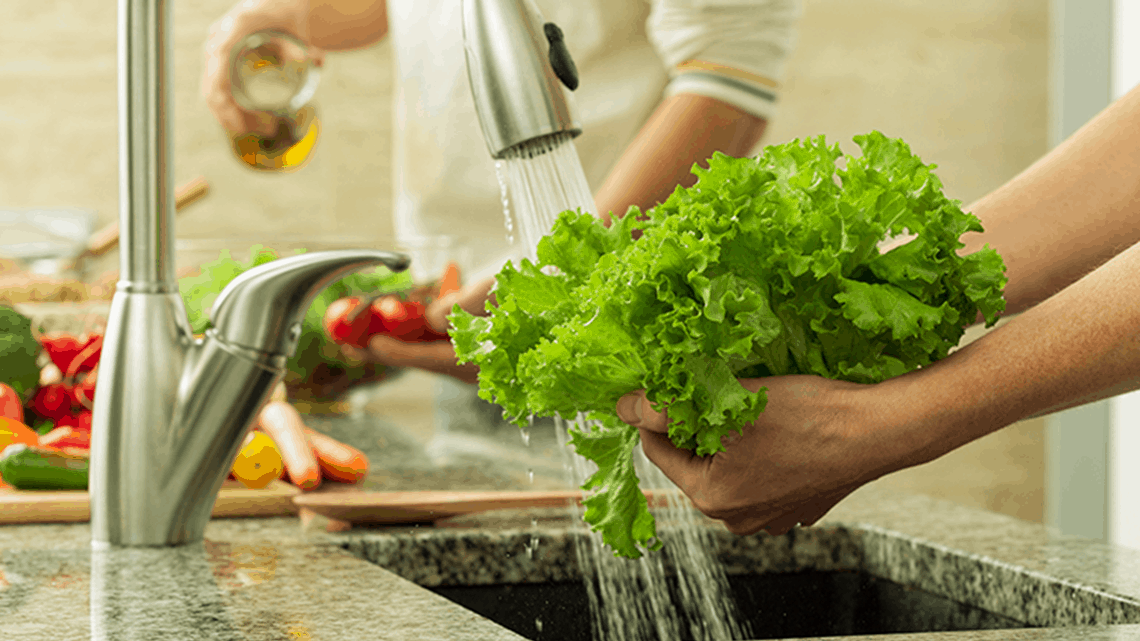Cross contamination and how to prevent it
We know what we see but can we see It all? Germs lurk beyond the horizons of direct spread too…
The world we live in is rapidly evolving at paces incomprehensible to an average thinker. For those who contemplate over contemporary scenarios of food safety and hygiene, cross contamination is a real threat. Unseen germs make your food and other surfaces around the house, their humble abode and the resultant destruction presents itself in the form of cross contamination.
For those of you who think we are babbling on about cross contamination without telling you what it actually is, should know that they are the ones who are most vulnerable to this threat. Acknowledging problem is the first and tackling it is the second step. Around the world, every year around 600 million fall prey to food borne illnesses and one of the major and of course a preventable cause is cross contamination. Using antibacterial wipes frequently and timely, is a known method of reducing cross contamination effectively.
What is cross contamination?
Cross contamination is known, usually, as the transfer of harmful and probably contagious germs from one surface to another. The germs can include all sorts of microorganisms involving bacteria, viruses, and other pathogens. The surfaces can involve any sort of objects to even live skin surface.
For instance, transfer of germs from a contaminated subway pole to an open epidermal wound is a type of cross contamination and whether you like it or not, you are exposed to innumerable germs during the day. Luckily, there are ways to prevent this disaster from happening and some of these ways, you have already adopted in your life knowingly or unintentionally.
Types of cross contamination
Food and Food
Understanding cross-contamination-types is indispensable to making preventive efforts in the right direction. One of the types is food-to-food contamination and this is a result of mixing up contaminated food with a healthy one. It won’t be a bizarre expression if one says that most of the time it happens when one mixes up raw and cooked food. Unwashed food is, at times, loaded with bacteria on its surfaces such as salmonella, staphylococcus aureus, Escherichia Coli, and others. Leftovers in the fridge can also become home to a colony of bacteria if left in the fridge for too long, therefore consuming leftovers as early as possible is a healthy choice.
People and Food
Humans are also known to transfers germs to food and then consumption of same contaminated food can make a healthy individual seriously ill. Not washing hands after coughing or sneezing and then touching raw poultry with same hands is another way of transferring the bacteria. Washing hands with bar soap and water is one of the most effective ways of stopping this cross contamination.
Surfaces and Food
Another potentially dangerous way of cross contamination is preparing foods on contaminated surfaces for example, countertops, worktops, cutting boards, utensils, and even storage containers. The transfer of bacteria might happen at any time during the process of food production. An incident resulted in death of 22 individuals who ate food prepared by listeria contaminated meat slicers. Now here, using the proper disinfectant spray or applying recommended disinfection protocol could have easily saved many lives.
Ways to prevent
We have already told you about methods of avoiding cross contamination while discussing the types but you should also follow these tips for better protection. Separate raw fish, poultry, and meat from other foods while shopping and try using different plastic bags.
Even when refrigerating, make sure that you are putting raw and cooked food in separate compartments, also keep an eye on where are you putting your eggs. When you are about to cook food don’t forget to wash hands before, during, and after so that you don’t take any bacteria in your kitchen and from the kitchen to anywhere else.
Use a clean plate while serving food and again don’t put unwashed food and cooked food together. Disinfecting different surfaces throughout the house can prove to be really helpful when tackling cross contamination is your target. Widen your scope of inspection when it comes to evaluating your daily hygiene habits and this could help you in the long run. Scope your home and office regularly for any food safety irregularities.
Another thing to remember is that cross contamination occurs not only in homes and offices but also throughout our ecosystem so therefore it won’t be really possible to completely stop this process but we can always try for better outcomes. If you still have any questions, you can contact us right away. We’ll be more than happy to help you out.
